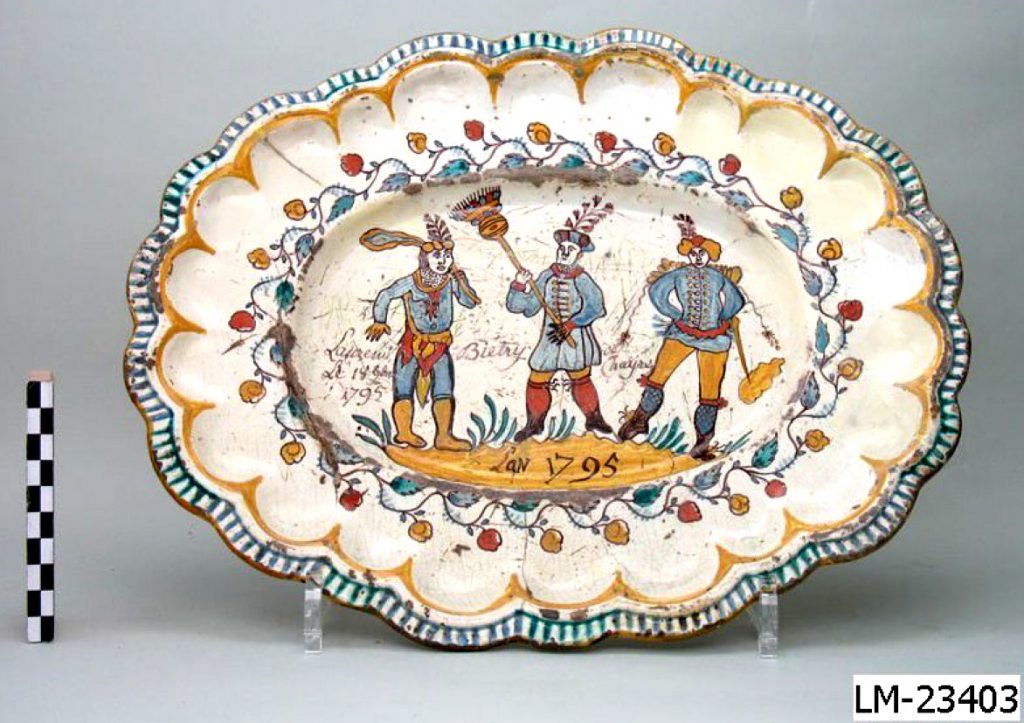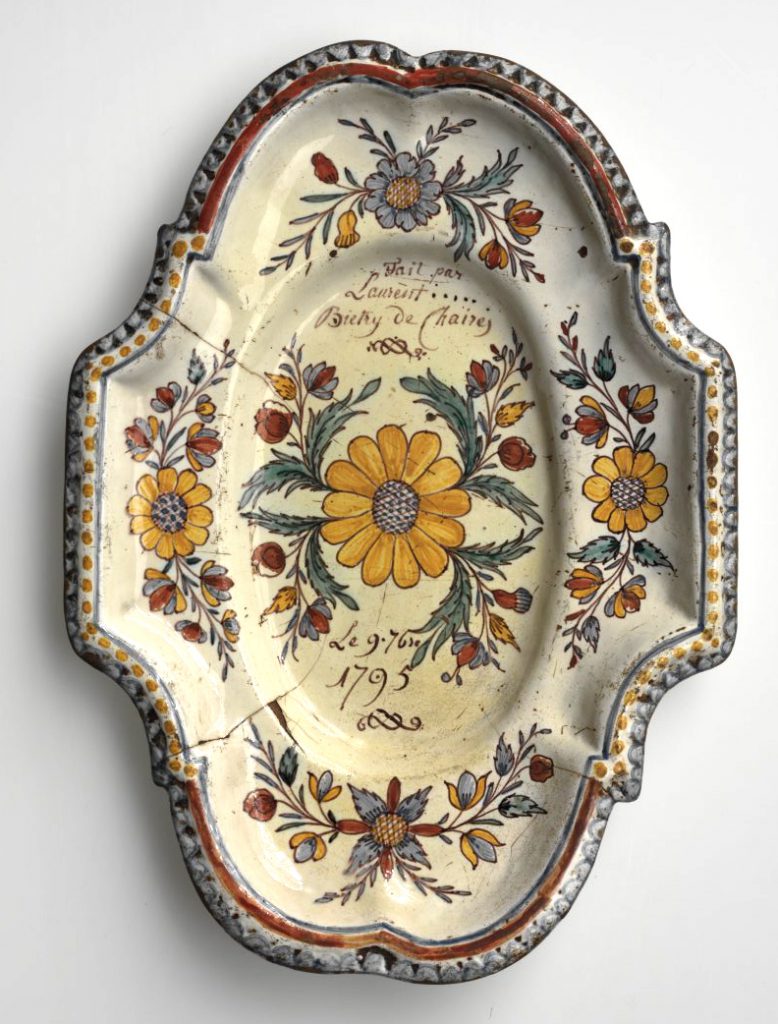
Roland Blaettler 2019
In 1765 the Trade Council of Bern launched an in-depth inquiry into the production of cookware in the Vaud region. This was in reaction to a petition submitted by local potters who were complaining about the drastic increase in imports of such vessels and who wished to decry the effect it was having on their business (see Schwab 1921, 23–25 for citations and comments). Because the results of the inquiry referred to more than just the category of cookware, they actually painted quite a complete picture of the pottery industry in Vaud. No fewer than seven potters worked in the city of Yverdon and its surrounding area at the time – according to Catherine Kulling this was the greatest concentration anywhere in the Vaud region (Kulling 2001, 33) – mainly producing “white crockery”. In terms of actual cookware (i.e. heat-resistant vessels), local potters claimed that they were not able to compete with the imported products.
As part of her research on 18th century tiled stoves from Vaud, Catherine Kulling also turned her attention to the stove fitters operating in Yverdon, especially to Jean-Albert Pavid (1710-1778) and Jacob Ingold (c. 1742-1816), who were among the most productive and most prominent specialists in their particular field in the Vaud region (Kulling 2001, 26-105). She ran with the theory proposed by Schwab (Schwab 1921, 25) that the potters who specialised in making crockery had mainly used the faience technique. Her support for this view was not only based on the Bern inquiry mentioned above, but also on a document that she had found in the city archive of Yverdon. It was a letter dated 1752 where local potters petitioned the city council to build a mill “for grinding the glazes needed to produce their ceramic wares, which are a type of faience” (Kulling 2001, 32).
If we take this text at face value, we must conclude that when the potters call their wares “a type of faience”, they mean that their products are similar to faience but are not made employing the actual faience technique. In our opinion, the “white tableware”, or at least most of the white tableware that was viewed as an Yverdon specialty in 1765, was earthenware with a coat of white slip, which was sometimes refined by adding underglaze brushwork decoration, in other words a more sophisticated version of slipped earthenware than what was usually available as everyday crockery. The technique that was used to make this white tableware (and in the production of tiled stoves) had long been established throughout the region and the resulting pottery was visually very similar to lead-tin glazed faience. The production of real faience, however, was more expensive and required a different expertise. Nevertheless, it is in some cases quite difficult to distinguish between these two types of pottery with the naked eye.

The only regional examples of this type of pottery that have been firmly identified so far are the works of the potter Laurent Biétry (1770-1853) in Cheyres, Canton of Fribourg (Babey 2016, 49), some 12 kilometres from Yverdon. The Swiss National Museum in Zurich has in its collection two signed shallow dishes with curvilinear rims dated 1795 (SNM LM-6212 and SNM LM-23403). A third, unsigned and undated dish is kept at the Musée Ariana in Geneva (MAG R 0136).
See also: Yverdon VD, “Weisses Geschirr” und die Faïencerie Rieff
Translation Sandy Haemmerle
References:
Babey 2016
Ursule Babey, Archéologie et histoire de la terre cuite en Ajoie, Jura Suisse (1750-1900). Les exemples de la manufacture de faïence de Cornol et du centre potier de Bonfol (Cahier d’archéologie jurassienne 37), Porrentruy 2016.
Kulling 2001
Catherine Kulling, Poêles en catelles du Pays de Vaud. Confort et prestige. Les principaux centres de fabrication au XVIIIe siècle, Lausanne 2001.
Schwab 1921
Fernand Schwab, Beitrag zur Geschichte der bernischen Geschirrindustrie (Schweizer Industrie- und Handelsstudien 7), Weinfelden/Konstanz 1921.

